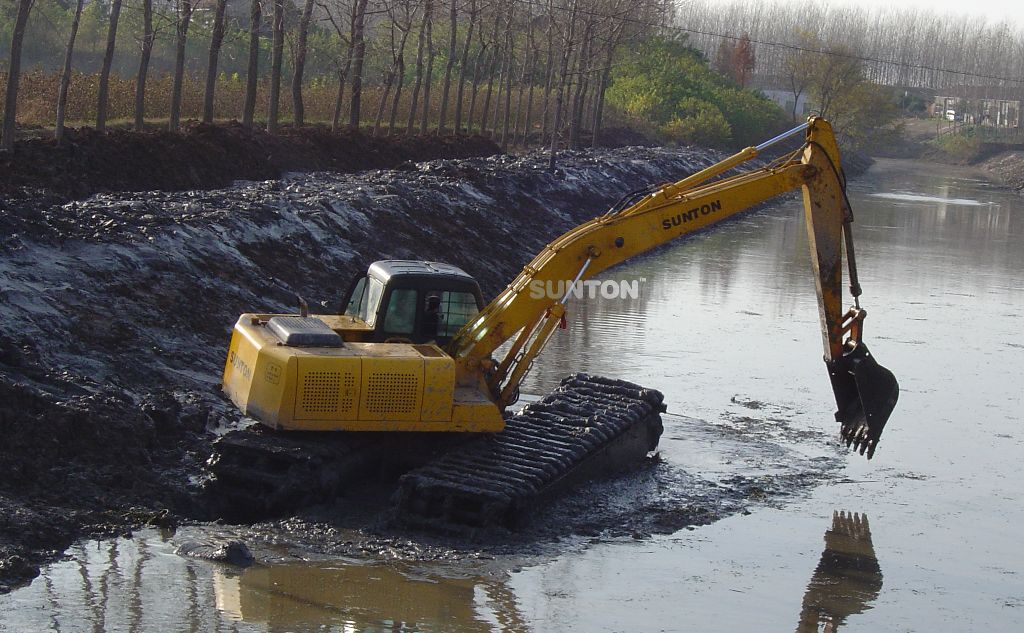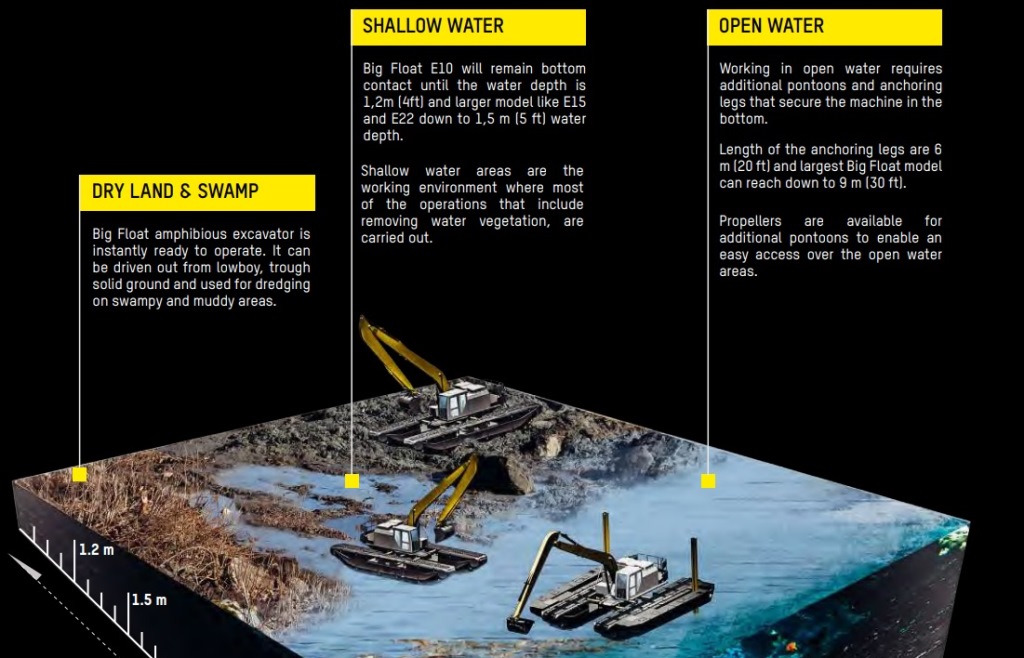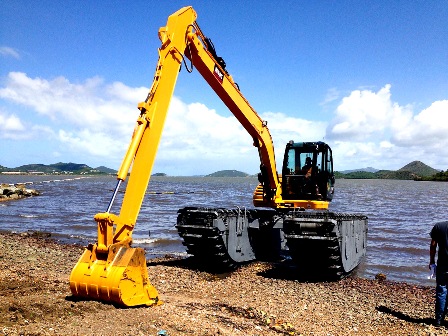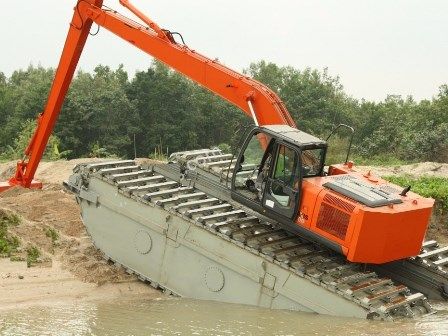A floating excavator also called a swamp buggy, or amphibious excavator is an excavator equipped with a sealed floating pontoon as landing gear, which can be used for shallow water dredging operations.
The pontoon is made of high-strength steel, resistant to corrosion and seawater. This ensures that the machine can work in the most demanding conditions. The amphibious excavator uses hydraulic power to drive its track system.
The swamp buggy’s pontoon landing gear is one of the world’s latest industrial equipment innovations. These excavators can operate in wetlands around the world.

Amphibious hydraulic undercarriage
In the past, engineers had to create a solid ground for floating excavators by building roads or bringing barges through canals.
To reduce the overall costs associated with industrial wetland pump applications, engineers developed this amphibious system.
The amphibious pontoon landing gear can be mounted on excavators and other heavy equipment, making it buoyant and capable of working in wet conditions without the need for additional construction.
This amphibious kit is ideal for transporting workers and equipment to job sites on terrain that is too soft to walk on and too dense to float.
Previously, these industrial projects required workers to build canals, roads, or platforms before operating heavy machinery in swamps and wetlands.
That process is time-consuming and expensive.
However, these roads and channels are necessary to support heavy machinery on soft or wet ground. With the support of the floating excavator, the machinery can be driven directly to the site, which can save a lot of money.

How does amphibious excavator work?
The most common use for an amphibious excavator is dredging because standard excavators can get stuck. These machines are versatile, they work on land and float on water. They are built to work in any situation.
You can cut aquatic vegetation, clean canals and waterways, and more. It is designed similarly to a conventional excavator with the added benefit of being functional in swamps and on water.
Applications of amphibious vehicle
Floating excavator undercarriage creates a safe working platform for challenging terrains. Each part of the unique design of amphibious excavators is the result of careful study and field experience.
The shape of the pontoons and modern high-strength steels, powerful drive motors, and a chain system similar to normal excavators are only a few of the features that create safety, quality, and better productivity at the end of the day.
Digging dredging and suction dredging
All kinds of digging dredging in shallow water areas down to 9 meters can be done with amphibious excavators.
Removing mud or stones, transforming reservoir banks, or cleaning industrial waste ponds are the most common applications for floating excavators, which can also operate as a tool carrier for suction dredging equipment.
Clearing waterways
Amphibious excavators are easy to operate also in canals and other narrow waterways. Debris, trash, branches from trees, and excess sediment that is piling on the bottom of a waterway can be removed with a rake or dredging bucket.
Landscaping and cutting aquatic vegetation
A floating excavator offers a safe and convenient way for landscaping in swampy areas on shorelines. When the machine is equipped with a rake, removing aquatic vegetation and the roots, can be done effectively. Also, special hydraulic tools can be used for harvesting weeds, willow trees, and other bushes from the waterfront.
Levee construction and restoration of wetlands
Levee systems are built to prevent river or coastal floods and with the purpose of water conservation. When it comes to constructing levees in areas inaccessible to conventional excavators or cranes, amphibious excavators are used.
A floating excavator is successfully used to construct levees, and dikes in wet, soft terrains such as marshlands and wetlands around the world.
Related Topics

Amphibious Excavator
How does amphibious excavator work?

Swamp Buggy Excavator
Some locations, such as wetlands, remote islands, and coastlines require specialized machinery.

Excavator Sizes Chart
The use of excavators for lifting operations, particularly on construction sites, has become more common over the last few years.
